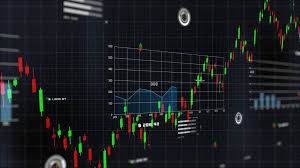
Trading Crypto Charts: Navigating the Digital Currency Landscape
In the world of cryptocurrency trading, success is often governed by timely decisions and the ability to interpret complex data. One of the most fundamental tools at the disposal of traders is the crypto chart. Trading crypto charts offer a visual representation of market movements and give traders an insight into price trends, potential reversals, and overall market sentiment. To truly excel in trading, it’s crucial to understand how to read and analyze these charts effectively. For more insights on the latest trends and strategies, visit Trading Crypto Charts http://www.freedomsphoenix.com/Forum/Add?EdNo=001&Type=News&Info=057004.
Understanding Crypto Charts
Crypto charts primarily consist of price movements logged over a given timeframe. The most common types of charts include line charts, bar charts, and candlestick charts. Each of these chart types offers unique advantages and insights into market trends:
- Line Charts: These are the simplest form of charts, plotting price data over time with a continuous line. They are beneficial for observing long-term trends but lack detailed information about price fluctuations.
- Bar Charts: Bar charts provide more information than line charts, displaying the opening, closing, high, and low prices within a specified time frame. This additional data allows traders to understand market volatility better.
- Candlestick Charts: The most popular choice among traders, candlestick charts offer an in-depth look at market conditions. Each “candle” reflects price movements for a specific period and allows traders to distinguish bullish from bearish trends effectively.
The Importance of Time Frames
When trading crypto, the choice of time frame is crucial. Different time frames can provide varying perspectives on market trends. Here are key time frames commonly used:
- Minutes: Suitable for day traders looking for quick profits and short-term trends.
- Hours: Helpful for swing traders who hold positions for several days, allowing them to capture medium-term trends.
- Days and Weeks: Ideal for investors aiming for long-term gains and those analyzing fundamental trends rather than short-term fluctuations.
Technical Analysis Tools and Indicators
While charts present data visually, the real insight comes from the application of technical analysis tools. Here are some of the most commonly used indicators in crypto trading:

- Moving Averages: These indicators smooth out price data to identify trends over time. Moving averages can help traders identify support and resistance levels.
- Relative Strength Index (RSI): This momentum oscillator measures the speed and change of price movements to identify overbought or oversold conditions.
- MACD (Moving Average Convergence Divergence): A trend-following momentum indicator, MACD helps traders identify potential buy and sell signals through the relationship between two moving averages.
- Bollinger Bands: These bands consist of a simple moving average and two standard deviation lines that can help gauge market volatility and predict price movements.
Chart Patterns to Watch
Besides indicators, understanding chart patterns can also aid in making sound trading decisions. Recognizing these patterns can help traders predict future price movements:
- Head and Shoulders: This pattern indicates a reversal and can signify a shift from a bullish to bearish trend.
- Double Tops and Bottoms: These formations often indicate a reversal in trend direction; traders should be cautious and watch for confirmation signals.
- Flags and Pennants: These continuation patterns suggest that the price may continue in the same direction after a brief consolidation period.
Risk Management in Crypto Trading
While trading crypto charts can offer significant opportunities, trading is inherently risky. Strategies for risk management are essential for preserving your capital:
- Set Stop-Loss Orders: Establishing stop-loss levels ensures that your trades are automatically closed if prices move against you.
- Position Sizing: The amount of capital allocated to each trade should be proportionate to your total trading account to minimize losses.
- Diversification: Don’t put all your eggs in one basket. Spread your investments across various cryptocurrencies to mitigate risk.
The Importance of Staying Informed
The cryptocurrency market is highly volatile and influenced by a myriad of factors, including market news, regulatory changes, and technological advancements. Keeping abreast of these developments can help traders make informed decisions:
- Follow credible news sources and updates related to cryptocurrency.
- Engage with online trading communities to share insights and strategies.
- Participate in webinars and courses to enhance your trading knowledge and skills.
Conclusion
Trading crypto charts is an essential skill for anyone looking to navigate the increasingly popular world of digital currencies. Understanding chart types, time frames, technical indicators, and risk management strategies can enhance your trading effectiveness significantly. By continuously learning and adapting your strategies, you can elevate your trading to new heights, making the most of this exciting market.
Success in crypto trading doesn’t come overnight; it requires patience, research, and a committed strategy. As the market evolves, so too should your approaches and techniques in trading crypto charts.
